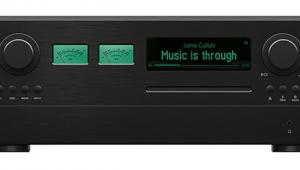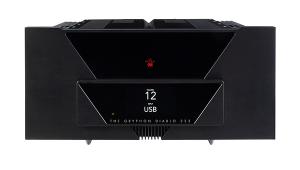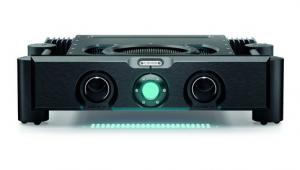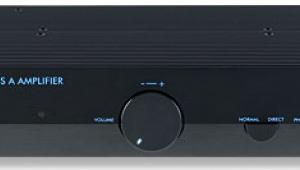NAD M33 Streaming DAC/Amp
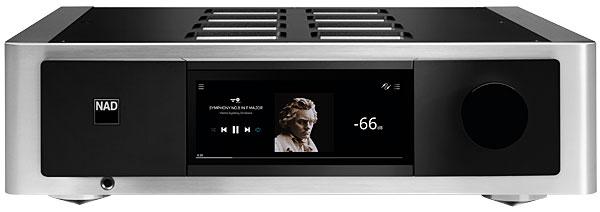
 Ever at the cutting edge of both analogue and digital Class D amplification, NAD's new M33 is the first to utilise Purifi's groundbreaking modules. All this and streaming too...
Ever at the cutting edge of both analogue and digital Class D amplification, NAD's new M33 is the first to utilise Purifi's groundbreaking modules. All this and streaming too...
Launched last year, NAD's M10 all-in-one streaming system [HFN Jun '19] was remarkable in two ways. One was that this compact 'just add speakers' package was actually part of the brand's elite Masters Series, more usually populated by high-end DACs and amplifiers, while the other was that this little system, selling for around £2000, was exceptionally good, receiving a glowing review in HFN before going on to win a 2019-20 EISA award as Best Smart Amplifier.
The EISA citation described it as 'a true master of modern music playback' so, yes, NAD may have been rather late to the network systems party, but when it finally arrived, it made quite an entrance.
Now, with the launch of the £3999 M33 there are two network systems – or, in NADspeak, 'BluOS Streaming DAC Amplifiers' – in the range. The M33 takes the M10 concept and scales it up into a full-size hi-fi component, complete with network and Bluetooth/Apple AirPlay 2 connectivity, and a new amplification section delivering 'a minimum of 200W per channel', against the 100W of the M10.
Evolution To Revolution
The Class D Eigentakt amp module hails from the Danish Purifi brand, founded by Bruno Putzeys (Philips/Hypex), Lars Risbo (TacT/TI), and Peter Lyngdorf (Hi-Fi Klubben, DALI and Steinway Lyngdorf). It's an evolution of technology that has been used in past NAD designs, and the M33 is more than capable of exceeding its rated power output.
The M33 looks very similar to the company's M32 [HFN Jul '18] – in that all the M-Series models have very similar styling – but with the addition of the M10's Gorilla Glass-covered 7in touchscreen display. And given that the M32 integrated amp was pitched at around £3500, and the M50.2 streaming player (with no amplification) at £3799, the £3999 tag on the M33 could be something of a bargain, provided the performance is up to snuff.

But before we get to that, let's take a look at what the new NAD M33 offers within its full-width, 13.3cm-tall frame. It's a lot, despite this imposing-looking unit weighing a rather modest 9.7kg. For a start, it's worth noting that the combination of aluminium and gloss finishes gives the unit a real feeling of solidity, as is usual with NAD Masters products, while the 'magnetic iso-point' feet help keep vibrations out. Moreover, with its conventional remote handset and Android or iOS BluOS app operation, you're unlikely to be touching that glass front panel too much and leaving fingerprints.
Network access allows the M33 to be integrated into multiroom audio systems, Windows or macOS desktop apps, and a whole range of third-party smarthome solutions, including Apple, Control4, Crestron, Lutron and more. As if all that wasn't enough, it can also be 'taken over' by Amazon Alexa and Google Assistant devices or, via AirPlay 2, Siri.
Feature Packed
A wide array of digital input options is available. Naturally, the M33 can stream content from network sources – using Wi-Fi or wired Ethernet connectivity – at up to 192kHz/24-bit, as well as accessing online streaming services including Amazon Music HD, Deezer, Qobuz, Spotify and Tidal (with MQA decoding for Tidal Masters streams), along with TuneIn Internet radio. It also has a USB input for playback from storage devices, an HDMI input for TV sound and an array of conventional digital inputs: two S/PDIF coaxial, two optical and an AES/EBU socket. Finally on the digital front, the M33 is also Roon-ready, although our early sample showed up as available, but 'uncertified'.
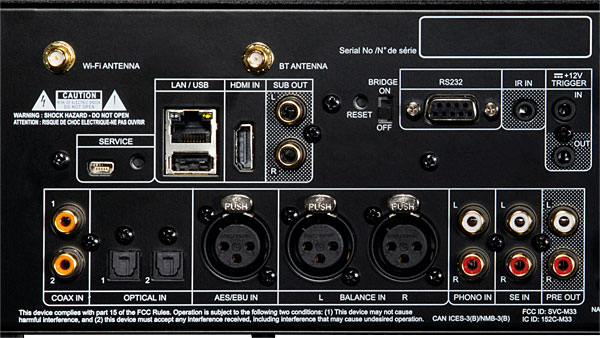
There are also analogue inputs, converted to digital at user-selectable sampling rates of up to 192kHz/24-bit. These extend to a MM/MC phono input, said to 'rival specialised outboard units', a further line input and one set of balanced inputs. Meanwhile, in addition to the two sets of loudspeaker outputs, enabling bi-wiring and two-zone operation, the M33 also sports a set of preouts, either usable full-range into an external power amplifier, or configured as low-pass filtered subwoofer outs. As for the front panel headphone output, this is powered by its own amplifier module, while the two-way implementation in the Qualcomm aptX HD Bluetooth module allows music to be played wirelessly to suitable headphones.
It's also possible to go into the menus and rename inputs, hide those not used, and so on. It's all a matter of a little time spent in set-up reaping rewards in day-to-day use, when a touch of the little window above the main display panel will wake up the M33 set up exactly as you want it.
See? It's all very comprehensive – but we're not done yet. The M33 also has built-in Dirac room correction [see HFN Jul '20], and comes with a microphone to measure your room, plus five memory profiles to account for different listening positions or conditions – NAD suggests with curtains open or closed – and Dirac Bass Management for those two subwoofer outputs. There are also conventional tone controls in the menu system, if you need them, and the speaker outputs can be switched into bridged mode, allowing the M33 to deliver a more than healthy 640W.





